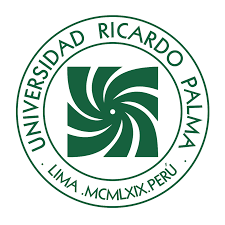¿How bioengineering influences slope stabilization and water erosion mitigation?
DOI:
https://doi.org/10.31381/perfilesingenieria.v19i20.6313Keywords:
Bioengineering, water erosion, slope stability, slopes, Mohr – Coulomb model, sustainabilityAbstract
The objective of the research is to develop a state of knowledge about the use of bioengineering in engineering projects at the national level and in the Latin American region. The influence of the main techniques used is evaluated, evaluating those that include the contribution of the roots of the vegetative material in the Mohr - Coulomb model and the use of the erosion rod and RUSLE methods to estimate the water erosion of a natural slope (slope) unstable. The research is documentary - explanatory with a comparative approach since the value of the safety factor with and without vegetation and the value of current erosion are contrasted using GIS models and the direct method of erosion nails. It is concluded that the use of vegetation, simply or collectively, to improve and protect unstable soils, influences the value of the safety factor, substantially increasing, and minimizing the amount of eroded soil.
Downloads
References
Diaz, J. S. (s/f). ESTABILIDAD DE TALUDES EN ZONAS TROPICALES. Gov.co. https://recordcenter.sgc.gov.co/B23/662_19MemExPl_373_Las_Acacias/-Documento/pdf/ [Accedido: 23-nov-2023]
MANUAL DE TÉCNICAS DE ESTABILIZACIÓN BIOTÉCNICA EN TALUDES DE INFRAESTRUCTURAS DE OBRA CIVIL. (s/f). Csic.es. https://digital.csic.es/bitstream/10261/110010/1/ManualVersionFinal.pdf [Accedido: 23-nov-2023]
Vista de Cuantificación de la erosión hídrica en el Perú. (s/f). Edu.pe. https://revistas.pucp.edu.pe/index.php/civilizate/article/view/18619/18857 [Accedido: 24-nov-2023]
González, P. V. (2016). Especies nativas para la estabilización y restauración de taludes urbanos San Carlos Bariloche y alrededores. Obtenido de Universidad Nacional de Río Negro Repositorio Institucional: https://rid.unrn.edu.ar/handle/20.500.12049/520
Sobrecases, S., Ingeniero Civil, M., Geólogo, I., De Empresas, D., Especialista En Geotecnia En, T., Perú, A., Díaz, O., Sanz, R. V., Sobrecases Martí, S., & Díaz, A. (s/f). Estabilidad de Taludes: Conceptos Básicos, parámetros de Diseño y Métodos de Cálculo. Edu.pe. https://revistas.pucp.edu.pe/index.php/civilizate/article/download/16157/16579 [Accedido: 25-nov-2023]
Guías de cultivo. (s. f.). https://www.export.com.gt/guias-de-cultivo [Accedido: 25-nov-2023]
Combinación de sistema Vetiver y Geomantos como Técnicas de Bioingeniería. The Vetiver Network International https://www.vetiver.org/LAICV2F/1%20Bioengineering/B3Castro_TS.pdf [Accedido: 25-nov-2023]
Meza, R. D. (2018). Técnicas de Bioingeniería y Biotecnología en taludes del cerro de la Picota - Huamanga - Ayacucho. Obtenido de Universidad Nacional San Cristóbal de Huamanga: http://repositorio.unsch.edu.pe/handle/UNSCH/2778
Pillpa, J. N. (2019). Estabilización de taludes mediante la técnica de bioingeniería con cultivos de pastos vetiver en zonas tropicales. Obtenido de Universidad Continental - Repositorio Institucional: https://repositorio.continental.edu.pe/-bitstream/20.500.12394/9325/5/IV_FIN_105_TE_Sanchez_Pillpa_2019.pdf
Sánchez, R. J., & Osorio, J. P. (2017). Efectos de la vegetación en la estabilidad de laderas: una revisión. Obtenido de Universidad de Antioquia: https://revistas.elpoli.edu.co/index.php/pol/article/view/1095/1511
Universidad Nacional Agraria. (2005). Programa para la Agricultura Sostenible en Laderas de América Central (PASOLAC). Obtenido de Manual de métodos sencillos para estimar erosión hídrica: https://www.researchgate.net/profile/Matilde-Somarriba-Chang/publication/259952614_Manual_de_metodos_sencillos_para_estimar_-erosion_hidrica/links/0deec52eac6bcdfb94000000/Manual-de-metodos-sencillos-para-estimar-erosion-hidrica.pdf
Grajales Saavedra, F., Vallarino, R., Mejía, G., & Centella, D. (2021). Bioingeniería de taludes: evaluación del uso de árboles y arbustos como posible mecanismo para incrementar el factor de seguridad. Revista de Iniciación Científica, 7(2), 26–38. https://doi.org/10.33412/rev-ric.v7.2.3336
Vásquez, A., & Tapia M., M. (2011). Cuantificación de la erosión hídrica superficial en las laderas semiáridas de la Sierra Peruana. Revista INGENIERÍA UC, 18(3), 42-50.
Ayala, L. D. (2019). Diseño de alternartiva para la estabilización de talud, empleando bioingeniería para la vía que conduce a la escuela rural de la vereda Pérdida Alta del municipio de Cimitarra Santander. Obtenido de Universidad de Cundinamarca, Repositorio Institucional: https://repositorio.ucundinamarca.edu.co/handle/20.500.12558/2669
Pena, R. A., & Vega, L. L. (2016). Reforestación en zonas de riesgos de deslizamientos y sus impactos en la economía para el desarrollo sostenible de las comunidades rurales. Caso: Provincia de Manabi-Ecuador. Obtenido de Universidad Tecnológica ECOTEC, Revista: Desarrollo Local Sostenible: https://www.eumed.net/rev/delos/26/reforestacion.html
Published
How to Cite
Issue
Section
License
Copyright (c) 2023 Gabriel Omar Carrasco Rosales , Martin Diego Vargas Allca , Esther Joni Vargas Chang

This work is licensed under a Creative Commons Attribution 4.0 International License.
In the event that the manuscript is approved for its next publication, the authors retain the copyright and assign to the journal the right of publication, edition, reproduction, distribution, exhibition and communication in the country of origin, as well as in the abroad, through print and electronic media in different databases. Therefore, it is established that after the publication of the articles, the authors may make other types of independent or additional agreements for the non-exclusive dissemination of the version of the article published in this journal (publication in books or institutional repositories), provided that it is explicitly indicated that the work has been published for the first time in this journal.
To record this procedure, the author must complete the following forms:

1.png)








